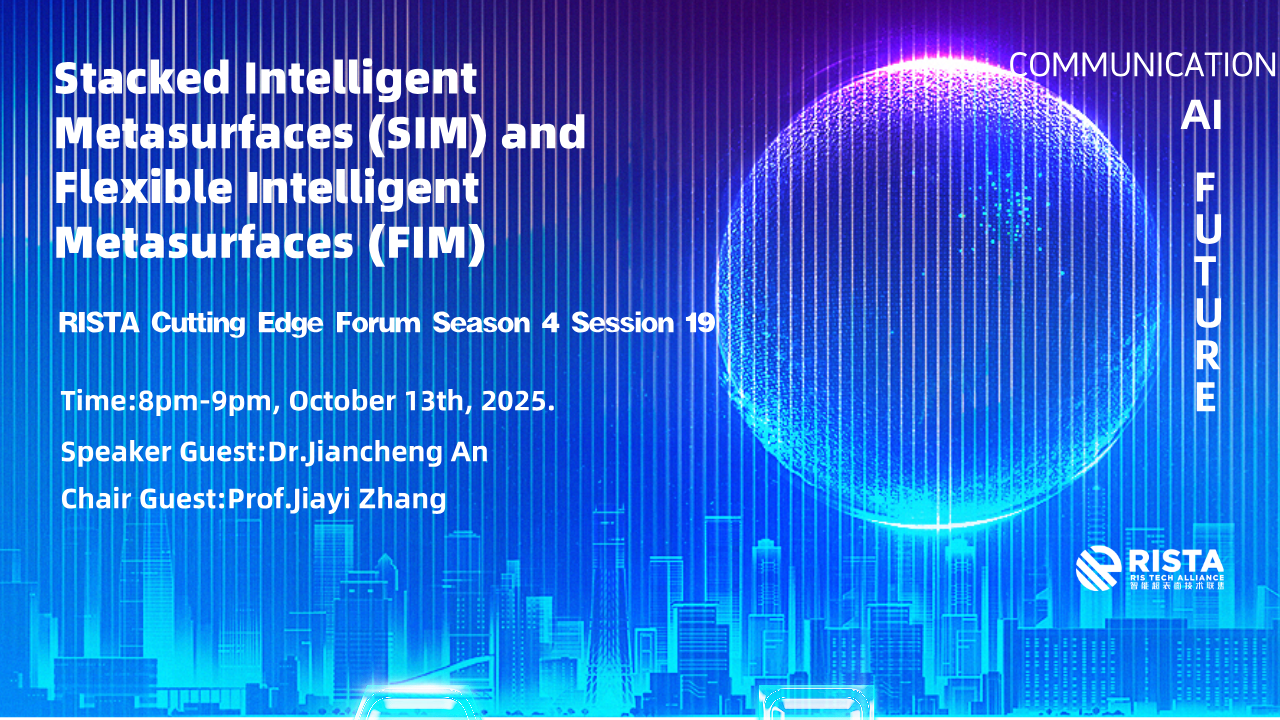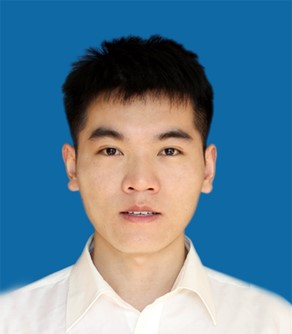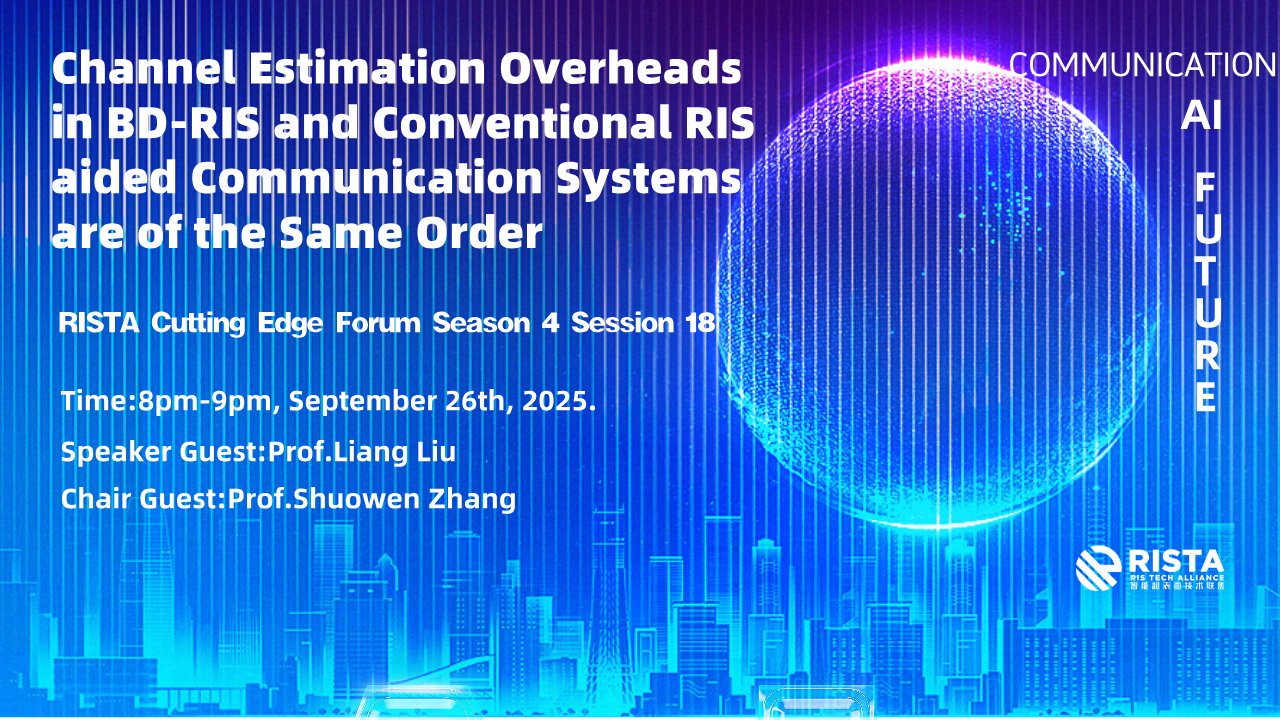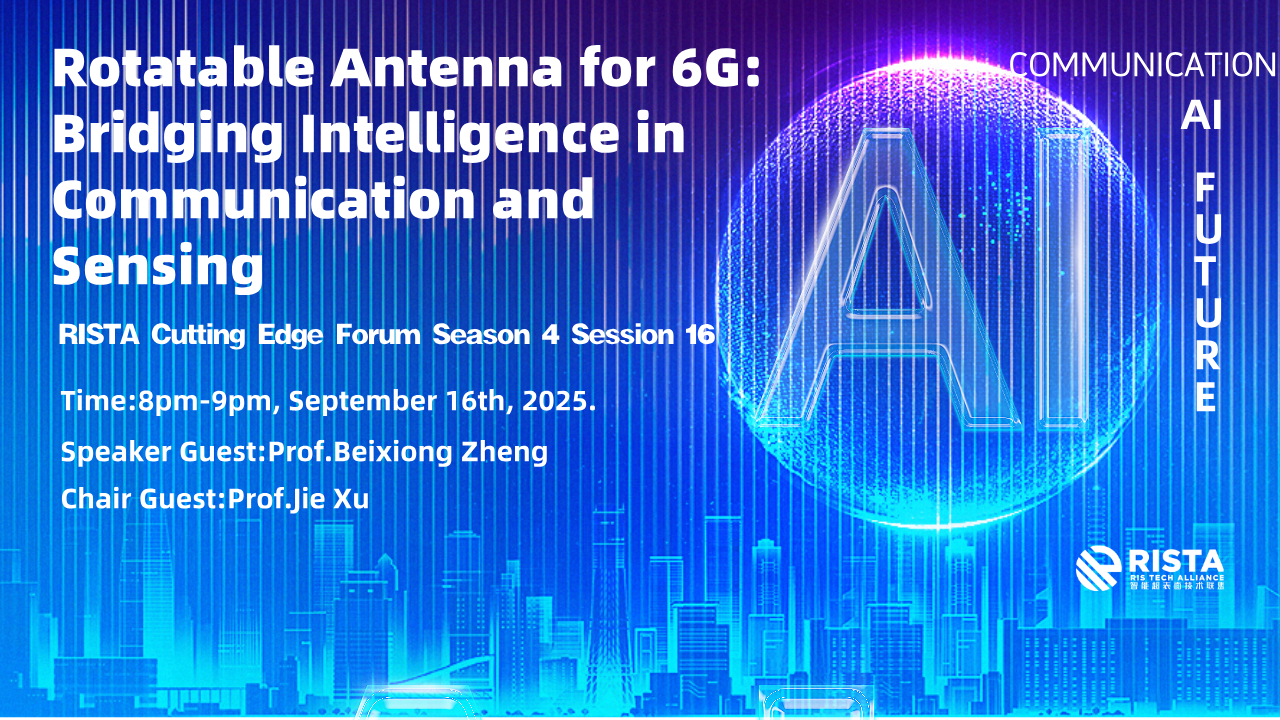
RIS CUTTING EDGE FOURM
Stacked Intelligent Metasurfaces (SIM) and Flexible Intelligent Metasurfaces (FIM)
层叠超表面与柔性超表面

Stacked Intelligent Metasurfaces (SIM) and Flexible Intelligent Metasurfaces (FIM)
- RISTA CUTTING EDGE FORUM Season 4 Session 19
- Time:8pm-9pm, October 13th,2025.
- Speaker guest:Dr.Jiancheng An
- Chair guest:Prof.Jiayi Zhang

Jiancheng An received the B.S. degree in Electronics and Information Engineering and the Ph.D. degree in Information and Communication Engineering from the University of Electronic Science and Technology of China (UESTC), Chengdu, China, in 2016 and 2021, respectively. From 2019 to 2020, he was a Visiting Scholar with the Next-Generation Wireless Group, University of Southampton, U.K. From 2022 to 2023, he was with the Engineering Product Development (EPD) Pillar, Singapore University of Technology and Design (SUTD). He is currently a Research Fellow with the School of Electrical and Electronics Engineering, Nanyang Technological University (NTU), Singapore. Since 2022, he has been working on advanced intelligent metasurface technologies, including Stacked Intelligent Metasurfaces (SIM) and Flexible Intelligent Metasurfaces (FIM). He has published more than 90 academic papers in IEEE WCM, JSAC, TWC, TAP, TSP and other top journals and academic conferences, including 4 ESI highly cited papers. He received the Best Paper Award at the 2023 IEEE International Conference on Communications. Currently, he serves as an Associate Editor of IEEE Wireless Communications Letters and a Guest Editor of IEEE Wireless Communications.





